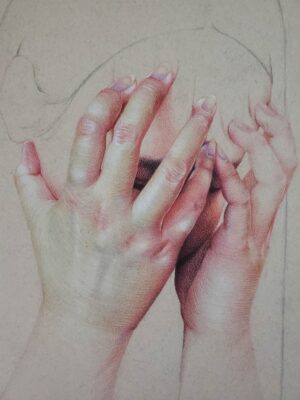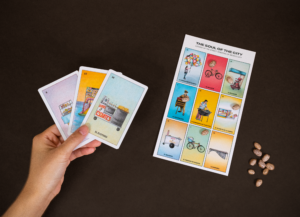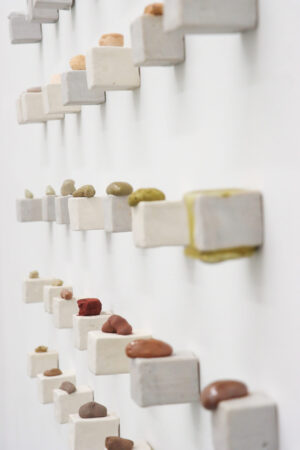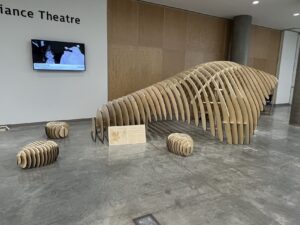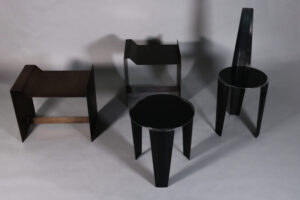SUBLIME
Bennett Molnar
See it On Campus: Level 1
Visitor InfoSUBLIME is hosted in room D1390 at the Emily Carr Great Northern Way campus
Award Recipient
Van Gogh Designs Furniture + Wood Design Graduation Award – Honourable Mention
SUBLIME
Dying To Talk To You
I used to think that I was afraid to die, but what I really fear is forgetting. Forgetting the places I’ve known and the people I’ve loved, or that those same people and places may one day forget me.
I’m still not incredibly thrilled to die, but through my time working on SUBLIME, I’ve evolved and distilled my relationship with death and becoming dead. I no longer see it as the scary skeleton man but instead, view it as something that I’ve been searching for all semester – Something worthy of reverence.
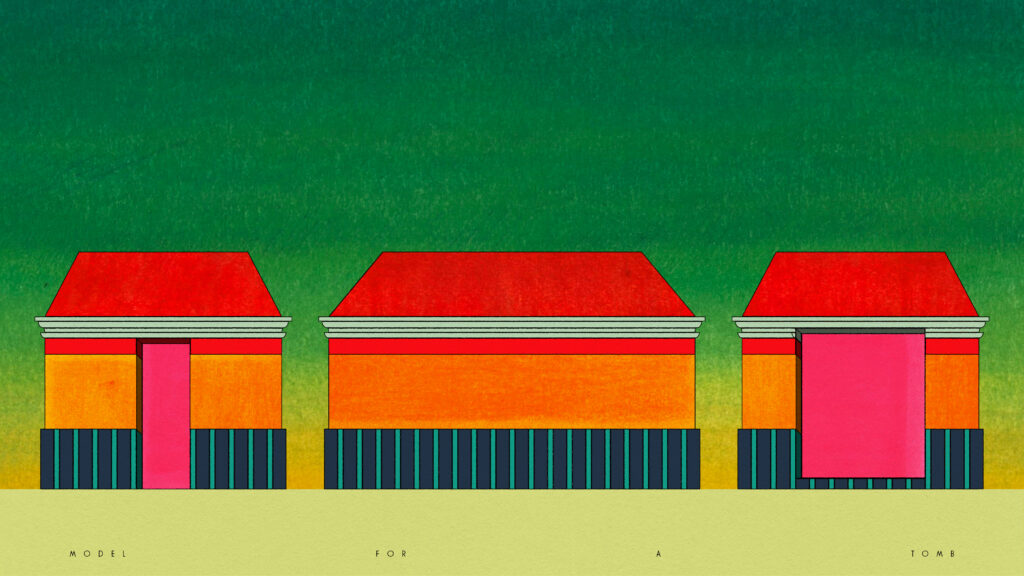
Personal loss comes with an hourglass that flips round and round in our minds and which determines for how long we’ll mourn, how long we’ll grieve, and for how long we’ll have to remember those who have passed before us. Sublime is a project centered on the disruption of traditional and typical post-death routines, concerning itself with the easing of the transitions between life and death. Both for the subject — In this particular project: me —And those who the subject will be leaving behind – my friends and my family.
TOMB
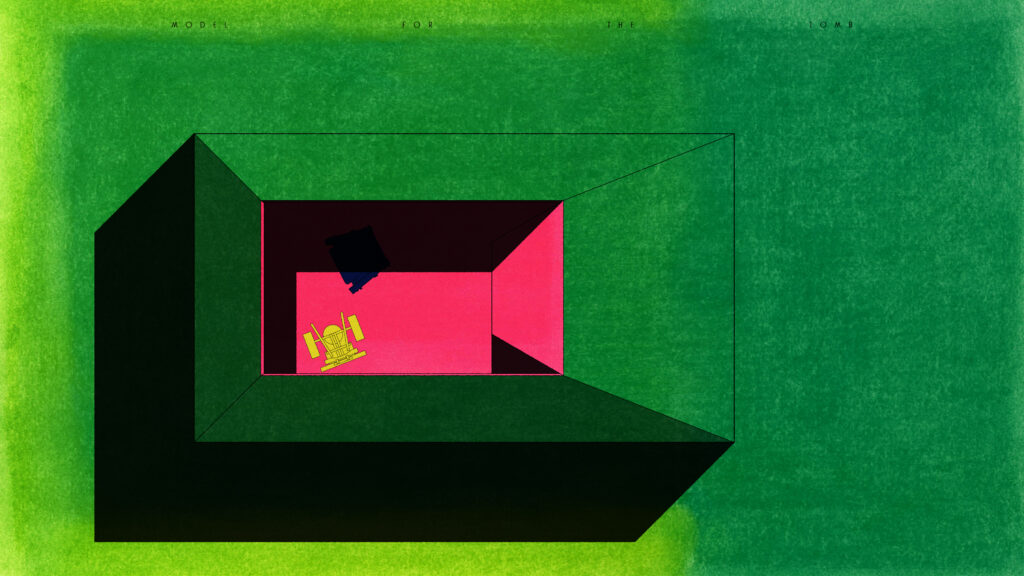
This project began with the tomb, the first component and the culmination of a journey that set out to explore my personal relationship with and approach to death – first as something to be feared and avoided, then something to be studied and understood, and now into something to be awed by and which demands to be respected. The tomb is meant to serve as a waypoint and a place of seclusion not only for the resident – my own ghost – but also for the people my ghost has left behind. Visitors can come to the mausoleum and experience a different relationship with death – one that is approachable and non-threatening – washed in color and perpetually opened to visitors, without the need for heavy metal doors and stone cladding on the walls. I wanted to create a space that felt both separate from our practical plane but was also passive and welcoming, straying away from the foreboding forms and palette of other, more traditional Western death structures.
SEATS
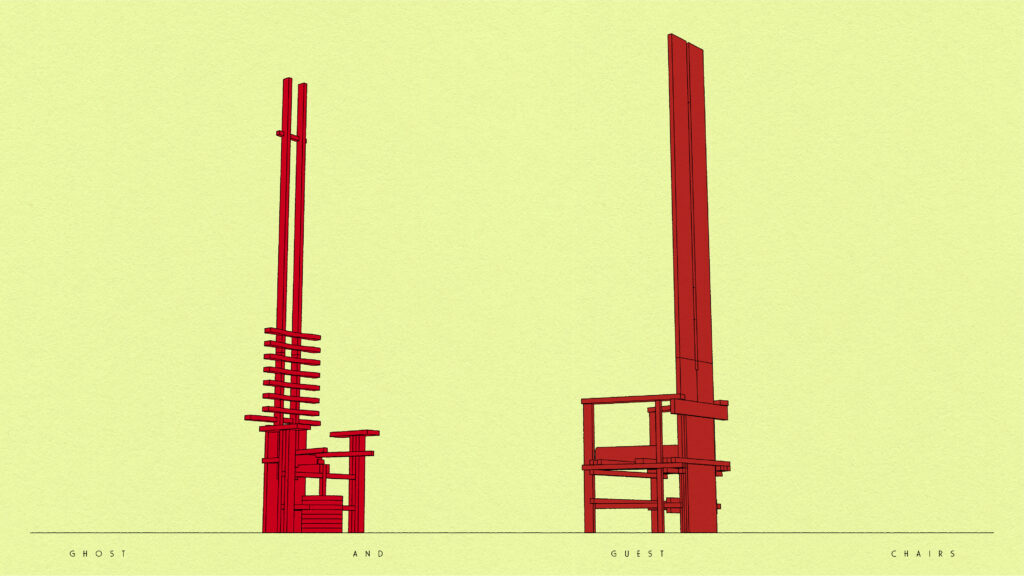
Within the mausoleum are contained two mourning chairs, one functional and one decidedly not, which stand tall and sentinel within the structure, waiting to facilitate the practice that the visitor, whoever they may be, has come to partake in. Standing nine feet tall and constructed from solid cherry, maple, and aspen woods, these chairs act as assigned seating for anyone wishing to visit me in my afterlife. The chairs are there to facilitate something called the empty chair technique – a grief coping strategy in which an empty piece of seating acts as a stand-in for a lost-loved one, allowing the participant some semblance of either closure or comfort. I will belong in the ghost chair, and the other is for my guests.
The empty chair technique in practice, performed in my apartment and attended by a late relative, subsequently finding the experience to be not only incredibly intense and emotional but also incredibly healing. It was during this session that I knew that the empty chair method was the practice I had been searching for. The perfect way to infuse my structure with a deeper meaning.
The first chair that I negotiated was the ghost chair, the seat that I’ll one day be occupying inside the tomb. I approached the form of this chair from an avant-garde standpoint, figuring that if I was going to be dramatic enough to design my own tomb then I might as well fill it with equally dramatic objects. The form is in some places traditional, but overwhelmingly evokes the shape of a skeleton, utilizing long and thin supports in conjuncture with back ‘ribs’ that come together to form a support for the non-corporeal occupant. These motifs and elements of over-design make the piece resemble, in my opinion, some sort of macabre arts-and-crafts version of an animal carcass.
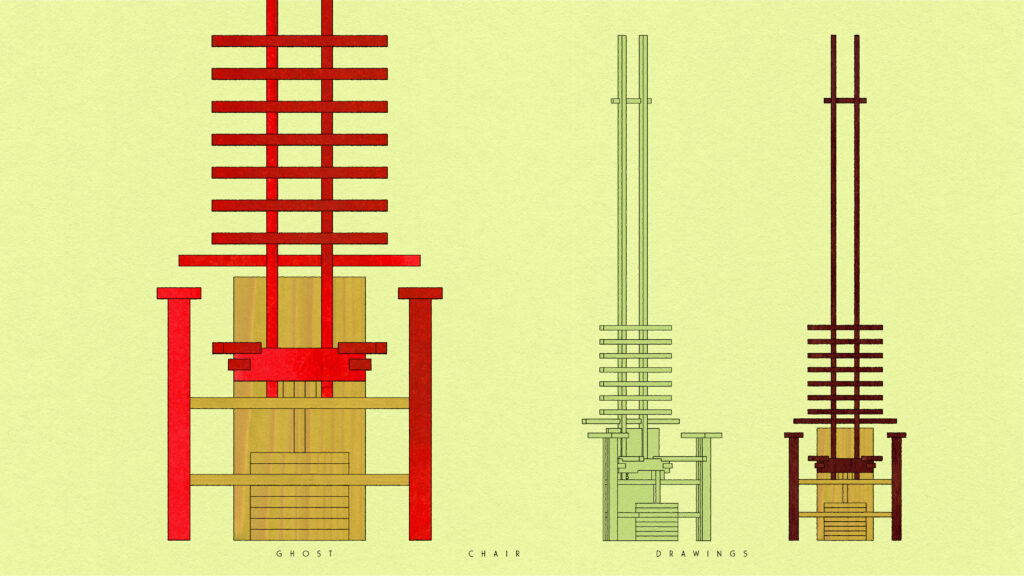
Conversely, the guest chair is far more inviting, with wide and full back uprights, an extra thick seat pan, and the open-embrace shape of the arm supports all give the impression of the flesh and muscle-covered body that would have been once occupied by the ghost chair.
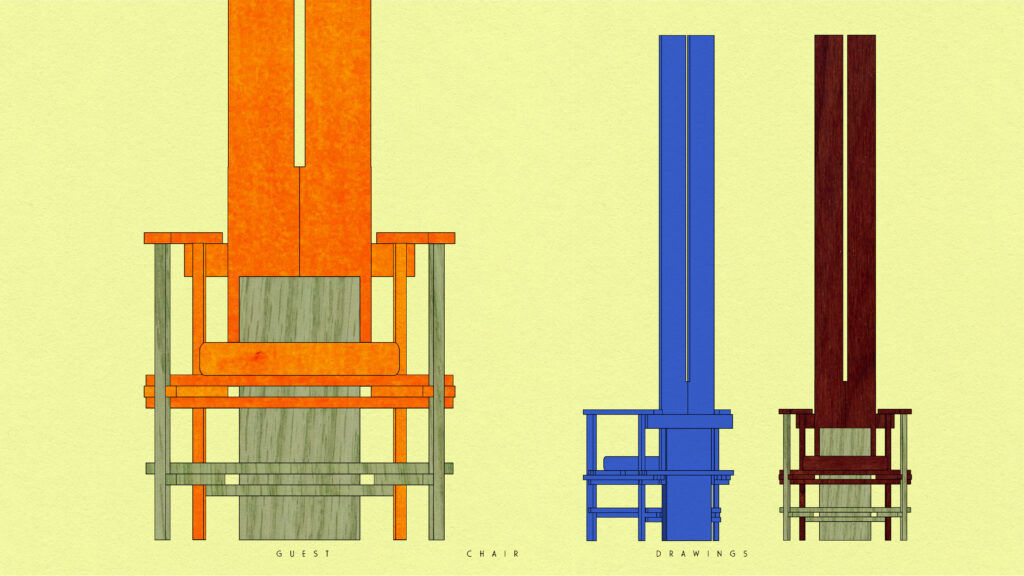
These chairs have been physically realized and completed and placed in situ within the SUBLIME Installation hosted at Emily Carr University, located on the first floor in room D1390
TO CONCLUDE
I began this project in an unsure position, not set on any one outcome or object for my senior thesis. Conversations with classmates and my first-semester professor Louise St. Pierre gradually steered me in the direction that I’ve followed through the second half of the year, a direction I hadn’t in the slightest bit expected. Death has been familiar to me for a long time, but never as familiar as I find myself now. Not in an urgent way, but I think more so in a way that relates to my maturity and understanding. I’ve never understood death like I do now, that probably would have been a better thing to say.

